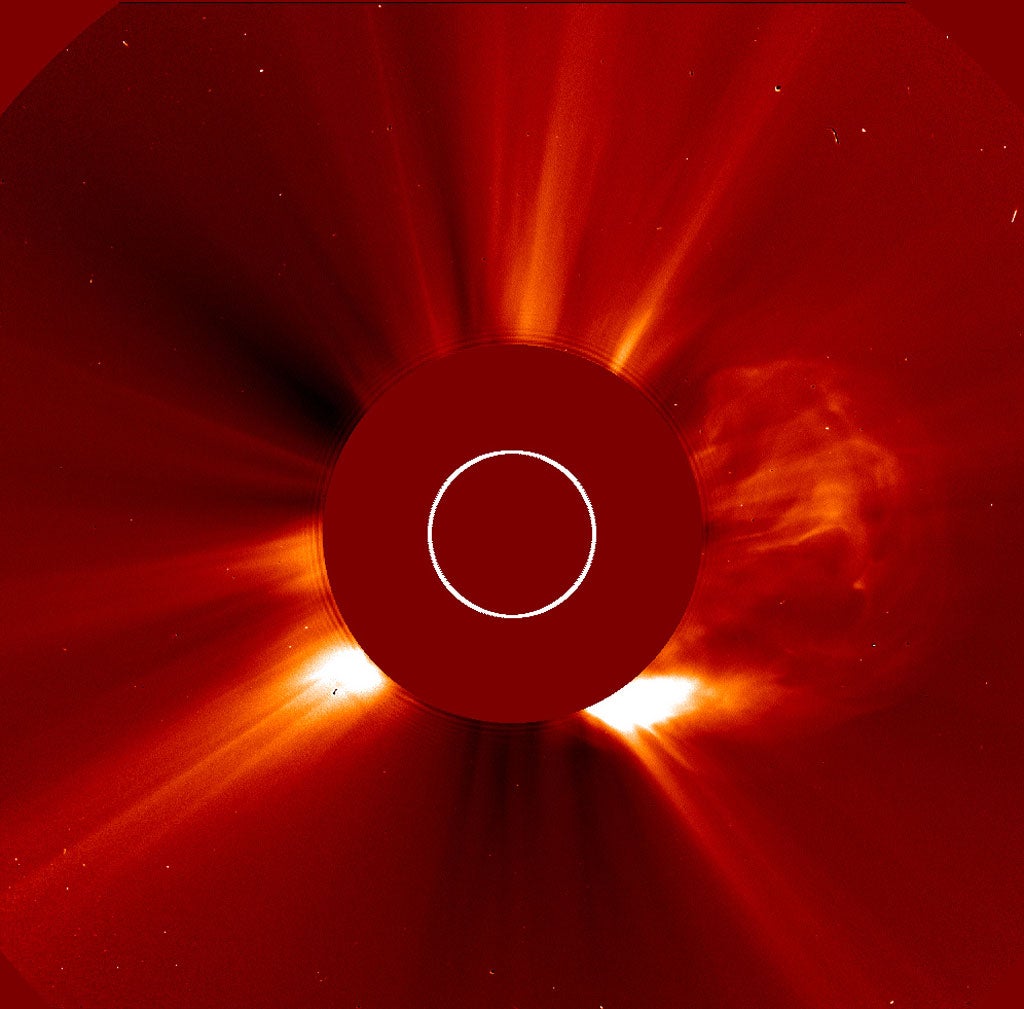Anthony Williams from the University of Leicester, United Kingdom, and his team used the Heliospheric Imagers (HI) on the Solar TErrestrial RElations Observatory (STEREO) spacecraft to examine the internal structure of an Earth-impacting CME — seen as sunlight scattered from high-density blobs of plasma — as it travels outward from the Sun. They compared this with the internal structure measured in situ by the Advanced Composition Explorer (ACE) spacecraft as the CME engulfed the spacecraft and impacted Earth. This meant that scientists for the first time have been able to compare the evolution of the CME structure as it races toward Earth, and the internal structure observed as it arrives.
The CME studied was ejected from the Sun March 19, 2010, when the STEREO A spacecraft was in a position to watch from the side as the CME hurtled outward toward Earth. The structure of the CME was examined in HI images spanning a distance of approximately 30 million miles (48 million km) at different distances between the Sun and Earth. Analyzing the images indicated that its speed was close to 220 miles (350 km) per second, which allowed its time of impact on Earth to be predicted some 3 days after the initial ejection.
The results indicate that the CME structure evolves considerably on its outward journey, and that the internal structure can be difficult to predict from the images. And there is another key facet to this work — imaging CMEs with spacecraft like STEREO is an extremely effective means of forecasting their impact on Earth and the large-scale disruption that can sometimes result.
Anthony Williams from the University of Leicester, United Kingdom, and his team used the Heliospheric Imagers (HI) on the Solar TErrestrial RElations Observatory (STEREO) spacecraft to examine the internal structure of an Earth-impacting CME — seen as sunlight scattered from high-density blobs of plasma — as it travels outward from the Sun. They compared this with the internal structure measured in situ by the Advanced Composition Explorer (ACE) spacecraft as the CME engulfed the spacecraft and impacted Earth. This meant that scientists for the first time have been able to compare the evolution of the CME structure as it races toward Earth, and the internal structure observed as it arrives.
The CME studied was ejected from the Sun March 19, 2010, when the STEREO A spacecraft was in a position to watch from the side as the CME hurtled outward toward Earth. The structure of the CME was examined in HI images spanning a distance of approximately 30 million miles (48 million km) at different distances between the Sun and Earth. Analyzing the images indicated that its speed was close to 220 miles (350 km) per second, which allowed its time of impact on Earth to be predicted some 3 days after the initial ejection.
The results indicate that the CME structure evolves considerably on its outward journey, and that the internal structure can be difficult to predict from the images. And there is another key facet to this work — imaging CMEs with spacecraft like STEREO is an extremely effective means of forecasting their impact on Earth and the large-scale disruption that can sometimes result.










